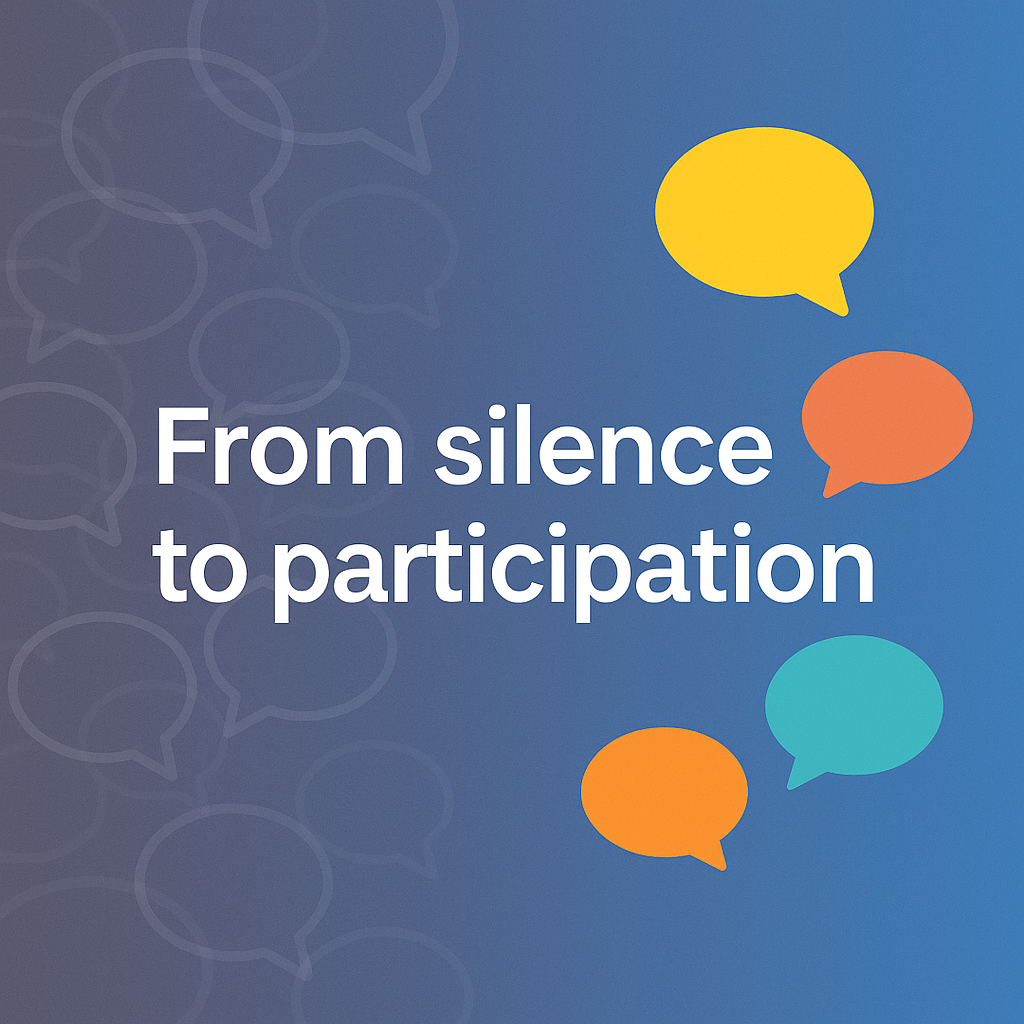The Learning Habits Students Think Work vs. What Science Says Actually Does
Introduction
Picture your largest class. The lecture hall is packed, students are scrolling on laptops or sitting quietly, and only a few brave voices ever speak. Now imagine the same class, but different: every student has completed the readings, small groups are buzzing with conversation, and polls during lecture reveal that even the quiet students are engaged.
What if your 150-student lecture actually felt like a seminar?
This scenario is not a fantasy. It is what becomes possible by designing classes that prioritize participation and accountability, supported by the right tools to make it manageable at scale.
The Current Reality of Large Lectures
If you teach a large class, you know the struggles:
- Participation anxiety: Students are nervous to speak in front of a crowd.
- Skipped preparation: Many arrive without doing the readings.
- Uneven voices: A handful of confident students dominate.
- Professor overload: Tracking participation and grading at scale feels impossible.
Research confirms these dynamics. A meta-analysis of 225 studies showed that students in traditional lecture settings were 55% more likely to fail than those in active learning environments (Freeman et al., 2014). Yet, paradoxically, students often believe they learn more in passive lectures, even though assessments prove the opposite (Deslauriers et al., 2019).
Imagine the Alternative
Now, imagine this instead:
- Students walk into class having already answered in-text questions tied to the readings. They know the questions count for credit, so they come prepared.
- You start the lecture with a live poll. Instead of silence, every student submits a response, and the results spark discussion.
- Midway through, you break the class into small groups. Each group debates a prompt, then one representative shares their perspective. Suddenly, students who never raise their hand are contributing through their group’s voice.
- As students participate, you see their responses logged automatically, tied to participation points. You are not buried in grading later; you can focus on feedback and teaching.
The lecture hall no longer feels like a broadcast. It feels like a space of shared discovery, closer to the energy of a seminar.
Research That Backs It Up
This vision is supported by a growing body of research:
- Active learning meta-analysis: Students in active settings see higher test scores and lower failure rates (Freeman et al., 2014).
- Perception vs. learning: Students may resist at first, but data shows they actually learn more in interactive classes (Deslauriers et al., 2019).
- Cognitive engagement: Embedding questions reduces mind-wandering and boosts retention (Szpunar, Khan, & Schacter, 2013).
- Institutional outcomes: NSSE benchmarks show that engagement is strongly associated with higher retention and persistence (Pike, 2012).
- Technology adoption: EDUCAUSE (2023) reports that polls, in-text questions, and multimedia are among the fastest-growing tools in higher ed.
How Classavo Helps
Of course, imagining this scenario is one thing. Building it into your class is another. Designing new questions, embedding them in content, and grading hundreds of responses could feel overwhelming. That is where Classavo makes the difference:
- Embed in-text questions in minutes - no need to reformat your readings.
- Sync content across sections - update once, apply everywhere.
- Track participation automatically - make engagement visible without manual tracking.
- Use auto-grading for check-in questions - Classavo takes the first pass against your rubric, saving you 30% or more of grading time.
- Integrate seamlessly with your LMS - no IT tickets, no disruption.
Classavo turns the vision of an interactive lecture into something practical and sustainable for real professors with real workloads.
Conclusion (Aspirational + Motivating)
The large lecture does not have to be a one-way broadcast. With the right design, it can become a place where every student participates, learns, and feels part of something bigger.
And in a time when students can turn to chatbots for instant answers, the role of universities is even more important: to cultivate the human skills of dialogue, debate, and critical thinking. These are the skills that cannot be automated. They are forged in classrooms where professors challenge, guide, and listen.
Every time you add a question, run a poll, or open a space for multiple perspectives, you are helping students practice skills that will carry far beyond the classroom. In shaping those conversations, you are not just covering content, you are shaping citizens, leaders, and problem-solvers.
Want to try these strategies but have no time? [Schedule a short chat with us to see how Classavo can help.]
Works seamlessly with all major LMS systems.
References
- Freeman, S., et al. (2014). Active learning increases student performance in science, engineering, and mathematics. PNAS, 111(23), 8410–8415.
- Deslauriers, L., McCarty, L. S., Miller, K., Callaghan, K., & Kestin, G. (2019). Measuring actual learning versus feeling of learning in response to being actively engaged in the classroom. PNAS, 116(39), 19251–19257.
- Szpunar, K. K., Khan, N. Y., & Schacter, D. L. (2013). Interpolated memory tests reduce mind wandering and improve learning of online lectures. Psychological Science, 24(10), 1963–1971.
- Pike, G. (2012). NSSE benchmarks and institutional outcomes. Indiana University Center for Postsecondary Research.
- EDUCAUSE. (2023). Horizon Report: Teaching and Learning Edition.
